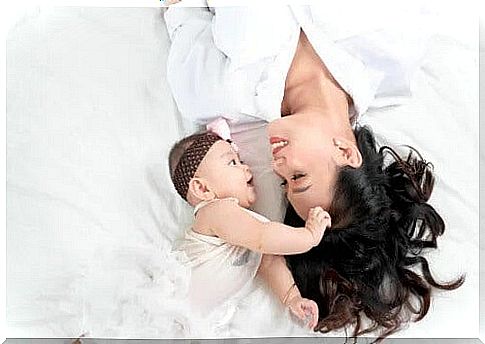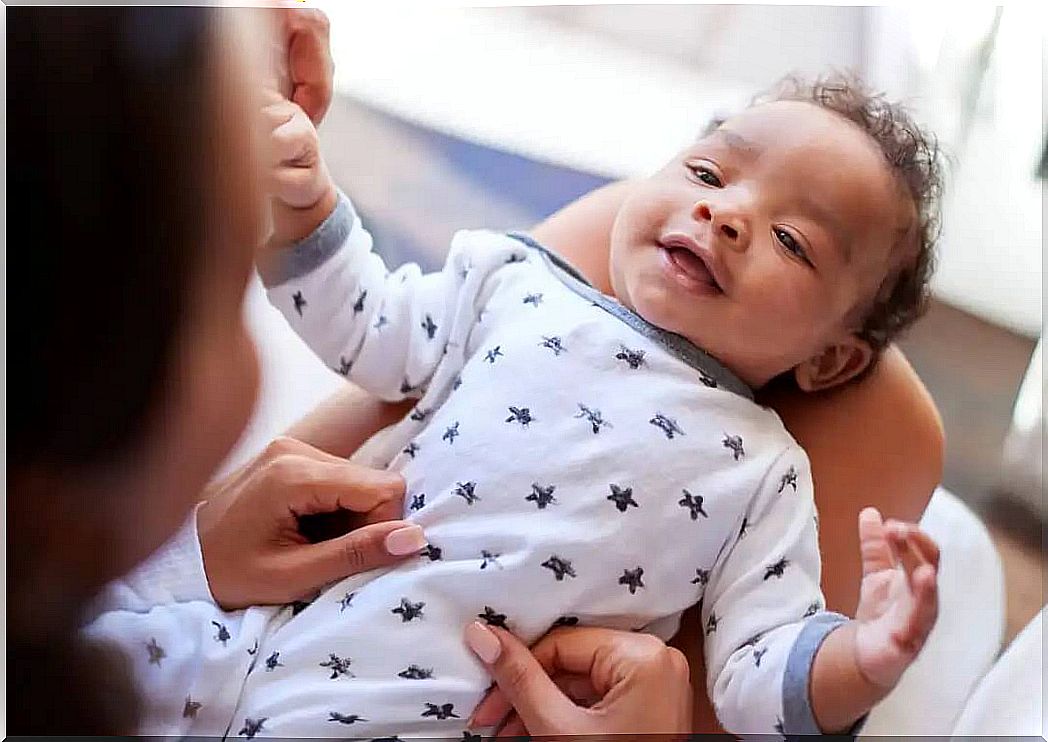7 Steps In Baby’s Emotional Development

The baby has emotions. Like everything else in your life, first they are very basic and then they evolve. The baby’s emotional development is a process that is intertwined with his physical and mental growth.
Over the first 3 years of life, each of these aspects (physical, mental and emotional) will predominate or become more noticeable, but the three go together and are essential for the baby to reach the development that will guarantee his well-being and balance.
Steps in the baby’s emotional development
In order to understand how the baby’s emotional development takes place, the classification we present is for purely didactic purposes. As we have always stated, each baby is unique and, in the context of its individuality, it will have its own particular pace and development.
1. From 1 to 3 months
Let’s find out together what the newborn’s reactions are. As you might guess, they are quite concise and simple, but will increase in complexity as your little one grows.
- Pleasure: feels comfortable and welcomed in the mother’s arms when being breastfed.
- Dislike: cries to express hunger, thirst, discomfort with wet diapers or some pain.
Their needs are “urgent” and their reactions exaggerated. Crying is a release to ensure your survival, which little by little will become a way of communicating your needs. This is what this study published in Ponencia presentada en el congreso de Madrid affirms ( Lecture presented at the Madrid congress ) .
Thus, as it grows, the baby will incorporate gestures, sounds and, later on, words. He shows interest in the faces of people around him and learns to distinguish expressions of joy, sadness and anger. Also, sketch the first smiles. The baby smiles when he is happy or makes faces to get attention.
Learn to recognize your parents and the people you are familiar with. He is dependent on his mother and, to the extent that his needs are met in a timely manner, his personality and stability are structured.

2. From 4 to 6 months
From 4 or 5 months onwards, anger and disgust arise. The baby cries to show his displeasure. He responds more and more to the faces and voices around him. He enjoys the company and attention of parents and caregivers, and establishes a privileged relationship with each one.
Furthermore, with voices, gestures, screams, smiles and laughter, he tries to communicate, it is no longer just to satisfy a need for survival. Recognizes and responds to the mother’s moods.
At 5 months, he begins to show feelings of fear when he hears loud or unexpected noises, as indicated in this article published in Revista de APPIA. At 6 months, the baby begins to find more and more strange people he does not know and can physically express his displeasure.
3. From 7 to 9 months
At 7 months, the baby reacts decisively with tension and fear in the face of the unknown. As he already has a memory, he is happy to see familiar faces. At the same time, you will feel fear in the presence of strange adults.
Between 7 and 8 months, he is interested in other babies and older children. Likes to communicate with smiles and gestures. Use all the skills acquired so far to establish this communication and relate. For example, he begins to show interest in toys, looking at them from all sides, throwing them.
Finally, the baby perceives the temporal separation from his mother or whoever takes care of him most and this affects him a lot. The fear and anxiety he feels about the separation will subside as a result of the bond he has created with the caregiver while the mother is away, that is, the greater the bond, the less anxiety and vice versa.
The baby makes fun of waiting for a reaction. He needs to be recognized as an interlocutor. In short, at this stage of the baby’s emotional development, the need for communication is as relevant as the satisfaction of physical feeding and care needs.
4. From 10 to 12 months
The baby easily expresses joy, disgust, or anger. He notices whether people are happy or upset with him and reacts differently. He also has fun imitating others. Imitates expressions of surprise, screams, gestures.
Understands and follows social rules and routines. Express your affection with hugs and clapping, especially with your parents and close family members or caregivers. It already recognizes your name.
In addition, the baby is very attentive to the movements of the mother and father at home, and if they leave the space where they are, they cry. If a stranger picks you up, you feel anxiety.
At this stage of emotional development, the baby begins to raise his arms to ask the mother or father to pick him up. It’s also common for him to start helping out while they’re dressing him by raising his arms.

5. Emotional development of the baby from 13 to 18 months
When exploring something unknown, he seeks parental approval. If you receive a look of fear, you will feel self-conscious. If he receives a smile, he will dare to approach.
The emotional behavior of the adults who love the most (mother and father) regulates the baby’s ability to explore and relate. And this is what the same article Lecture presented at the Madrid congress that we have already mentioned indicates.
The baby captures the information he receives from the world around him. He already knows if his needs are met at the first cry or if he must cry for hours to be paid attention to him.
The baby is very sensitive to the mood of the parents or caregivers. If the parents or caregivers are happy, the baby plays more. If they are sad, the baby will be more elusive. It goes from wanting to be glued to parents to playing independently on their own.
At this stage of the baby’s emotional development, the little one is aware of the way they are shown affection. Learn to express your affection through imitation. He enjoys giving kisses and hugs as well as receiving compliments and acts accordingly to receive them. Jealousy also appears. It’s self-centered.
6. From 19 to 24 months
It is a difficult emotional period, as the little one wants to be independent and autonomous, but is still dependent in many ways. This creates frustration, which triggers the impending tantrums or tantrums.
He communicates through the body: if he bites or strikes, he is expressing his anguish, his difficulty in expressing his feelings properly or his need for clear boundaries.
The path to independence is your main focus. Now, he understands that his desires are different from those of his parents, which creates an important unforeseen event: he doesn’t always get what he wants.
The baby starts a marked egocentricity at this time. If you want something, it’s for “now”, and those around you must satisfy your demands. He begins to savor his autonomy: he likes to be pampered, but when it’s enough, he lets them know. His favorite word is “NO”, as the article Lecture presented at the Madrid congress also indicates .
7. From 2 to 3 years
The child feels anxiety each time his feelings get out of control. Thus, he unleashes his anger, with which he intends to “scare” the adults. His biggest conflict is the clash between limits and his independence. It is not aware of the norms, but it abides by them because it respects the adults who impose them.
You understand that your actions trigger reactions in other people. Thus, he identifies these actions and learns to annoy or please others. The symbolic game appears and, through it, it releases part of its aggressiveness or tension.
Furthermore, as he also understands the sense of belonging, envy arises and fears increase. It’s time to start calling emotions by their names, so the baby can learn to identify and eventually regulate them.
About the baby’s emotional development
From birth, the baby has the ability to relate to other human beings. For this, you need another human being who reacts to your needs, demands and feelings. Thus, without a doubt, the best interlocutors will always be your parents.
So the model she will follow in learning to identify and regulate her emotions comes from the example of Mom and Dad, don’t forget that! Follow your child through the development process and help him to regulate his emotions.








